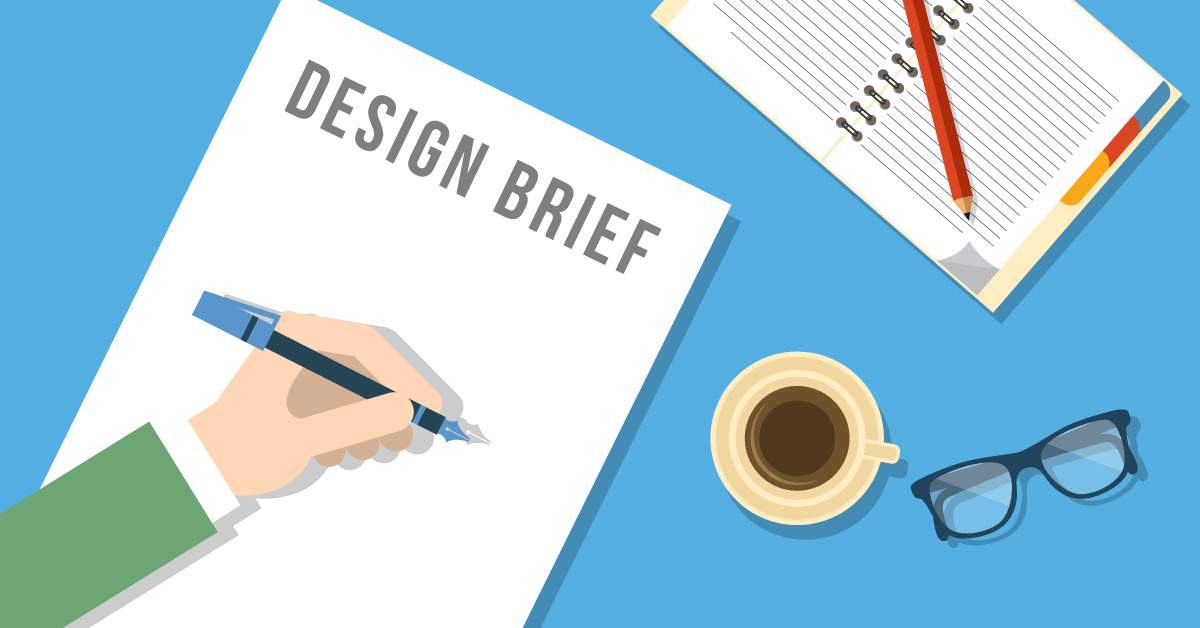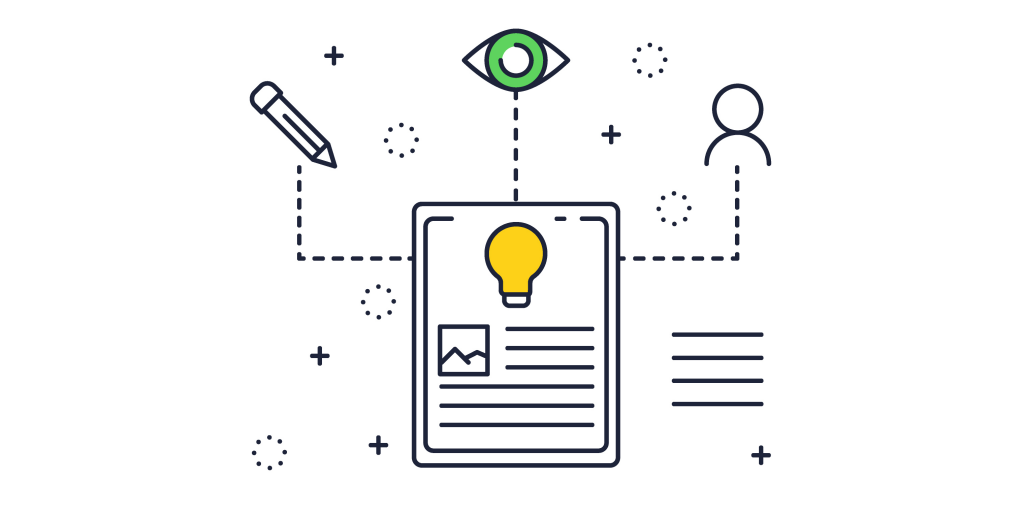Create an Effective Template for Design Brief – Design briefs are crucial for any project. They give your client an overview of the project, what they should expect from you, and the type of work done.
But how do you write an effective design brief? It can be time-consuming and confusing for clients and designers alike.
A design brief gives you an overview of the project. It includes information about your client, their goals, the project itself, and the deliverables you’ll provide.
A design brief helps you organize the project and ensure all the details are covered. In addition to being helpful, it’s also a good way to prepare for the initial meeting with your client.
Every project you work on involves a design brief, whether you realize it or not. A design brief is essentially a set of instructions telling the designer what the client wants and needs from the designer.
This list of tips and advice on creating an effective design brief template.
If you’re struggling to develop ideas on how to write a design brief template, this post will help you create an outline that will save you time and allow you to develop high-quality briefs quickly.
In this blog post, I’ll walk you through creating an effective template to help you make successful design briefs for any project.

What is a design brief?
Design briefs are generally used to outline the design process, but they can also effectively communicate your ideas to your client. They can help you clarify your thoughts and those of your client, and they can help your clients understand what you want to achieve.
The most important thing to remember about a design brief is that it is not a template. It’s not a one-size-fits-all document. A design brief must reflect your particular brand and your project’s needs.
The design brief is an outline of the project. It includes the requirements, goals, and objectives of the project. It also lists the client’s expectations.
It is essentially a snapshot of the project.
You can use the design brief as a checklist of items to cover when creating a logo. You can use it to outline the structure of a website. You can use it to write a business plan. You can use it to plan a website layout or any other design.
This is a crucial step in the process because it helps to keep the project on track and ensures that everyone involved understands what the project is supposed to achieve.
How to create an effective design brief?
They give the client exactly what they need while still giving you room to add in extra details later.
The most important aspect of this is that you have to be willing to ask questions. A good designer must be able to ask the right questions to gain a full understanding of the project.
This is the best way to ensure you understand what the client is looking for. And by asking the right questions, you can provide them exactly what they want.
So don’t be afraid to ask questions and know when to stop.
Your design brief is the foundation of your design project. It’s where you start, setting the tone for everything that comes after.
When creating a design brief, you should think about what kind of project you’re working on and who will be using it. It helps to break it down into specific sections.
The first section of your design brief should cover what your design will look like. It should include your brand, what it will represent, and the experience you want your user to have.
The second section of your design brief should discuss your target audience. Who is going to be using your design? What kind of people are they? Are they men or women? What age group are they?
The third section of your design brief should cover the purpose of your design. Why are you designing it? What is it going to accomplish?
The fourth section of your design brief should describe your design process. This includes the materials you’ll need, your budget, and your timeline.

How to write a design brief
A design brief is a document that helps you and your client understand what they want to accomplish.
The design brief is a way of understanding the project from both sides of the fence. It allows you to put yourself in your client’s shoes and see things from their perspective.
This is important because you need to show that you are willing to take initiative. Not only that, but you also need to demonstrate that you can create high-quality designs.
To become a professional designer, you must work on all three process aspects. You need to be able to think creatively, develop your skills, and create compelling visuals.
It sounds a little bit daunting, but it isn’t. It’s just a matter of finding the right resources. And this article has helped me tremendously.
The first step is to sit down and think about the project you want to work on. What is it you want to achieve?
Next, think about the type of person you want to work with. What kind of clients would be interested in your services?
Now, you’re ready to write your design brief.
Design brief template
So, in the first section, we discussed why design briefs are useful. We covered design thinking, user-centered design, wireframing, prototyping, user testing, usability, etc.
This second section covers a simple design brief template to start designing with your clients.
The design brief template will show you how to approach a project from the very beginning, and it also covers all the essential details your client will want to know.
So, if you want to start creating a design brief template for yourself, you’re in the right place.
The design brief template is a great way to create a powerful product concept.
It provides you with a framework to get your creative juices flowing.
You may think that you need to know the ins and outs of your product before developing a concept, but that’s not true.
You can start with a blank canvas and use the template to organize your thoughts. It’s easy to use, so you can get your creativity flowing.
And once you have the product concept locked down, you can start to refine it.

Frequently Ask Questions (FAQs)
Q: How do you find your inspiration for the design?
A: I love traveling and discovering new things. I am always in awe of nature and how it can change from day to today. This inspires me to create a collection with a theme that changes daily.
Q: How do you decide what should go on a website or in a catalog?
A: I look at the overall feel of the company and what they want to convey. For example, if a company sells clothes online, the overall design should be clean and simple. If it’s a company selling furniture online, the design should be more detailed.
Q: What’s one of the most common mistakes designers make when creating their templates?
A: Many designers use their existing templates as a starting point for designing a brand. If this happens, it is very difficult for them to start over with a clean slate.
Q: What are some of the most important aspects of a successful template?
A: To be successful, the template should be visually appealing, easy to understand, and provide clear information for a user.
Q: Are there any trends or types of templates you like to use?
A: I like to use templates that have a simple, elegant look.
Myths About Design Brief
- A design brief isn’t a requirement to get started. There are lots of designers and developers out there who never create a design brief.
- A design brief is a tool to help you succeed, but it’s not a requirement. Many successful businesses have been built without a design brief.
- The design brief is just one element in building a successful business. If you have a plan and execute that plan well, you’ll find a way to make money.
- This is probably the most common misconception. While a design brief can be used to showcase your skills, it’s not the primary purpose of a design brief.
- The primary purpose of a design brief is to communicate the project’s vision and goals.
- Design Brief is a free online tool that helps you create a design brief for your product. This process will help you define your design brief and establish a set of criteria for the design.
- Designers are paid for their design services, but they aren’t paid for the beauty of their work. They are paid to ensure the product is designed to make sense.
Conclusion
Creating a template for design briefs is a must if you want to succeed in the creative industry. This is especially true if you are looking to start freelancing, as you’ll need to be able to get design briefs from clients quickly and efficiently.
If you’re serious about working in the design industry, this is something that you’ll want to master.
In this article, I’ll share a step-by-step guide to creating an effective design brief template.
